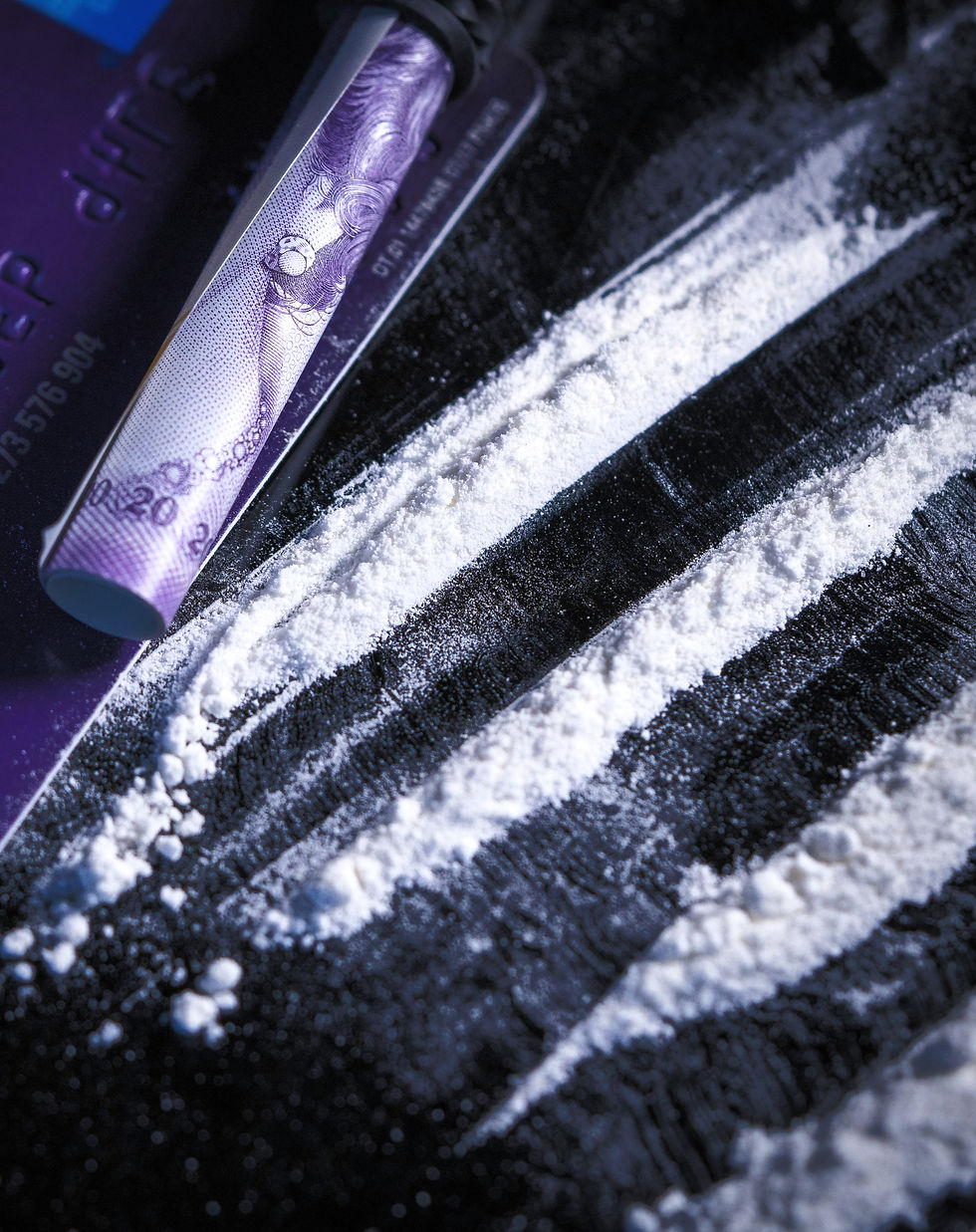Cocaine: The ups and the downs
- Kim May

- May 19, 2020
- 3 min read
Updated: Oct 29, 2025

Coke. Rails. Snow. Blow. Powder. White. Lines. Bumps. Cocaine use is nothing new, though it does seem to ebb and flow in terms of cultural relevance and popularity.
There is evidence that coca use in South America has been around since the sixth century. However, it was Angelo Mariani who gets a lot of credit for popularizing cocaine by creating “cocaine wine”, Vin Mariani in 1869. Then came Coca-Cola, Freud, the coke fueled 1980’s and so on. So, what exactly is it about cocaine that keeps people coming back to it, generation after generation? And why is the coke habit so hard to kick for some people?
How cocaine affects your brain and body
Cocaine is a short-acting central nervous system stimulant. A powerful one too. Its ability to increase our focus, alertness and minimize fatigue is largely the reason for its popularity. Cocaine has amassed a reputation as a party drug, due to the euphoria it produces as well as its influence on sexual appetite and performance. However, many people use it to bolster their school or work output.
Cocaine increases levels of dopamine in the brain. Dopamine is responsible for feelings of pleasure, as well as our fine motor control. The dopamine transporter becomes blocked by cocaine, which causes an increase of dopamine. Serotonin levels are increased as well. Cocaine’s high “addiction” potential is largely related to the major impact on the pleasure pathway of the brain. Stimulants also increase the amount of the neurotransmitter norepinephrine in the brain. Norepinephrine controls our fight or flight response.
This increase of dopamine, norepinephrine and serotonin produce the “up” associated with cocaine use. When cocaine enters the body, heart rate and blood pressure increase, we become hyperalert, we explore our environment, move around, feel euphoric, stop eating, and body temperature rises. Many of these physical responses are at odds with one another, and this is part of the reason that cocaine use can have adverse effects on our health.
Is cocaine addictive?
Certainly, not everyone who uses cocaine will become dependent. Although studies range in their numbers, it is estimated that between 5-18% of users become dependent. There has always been debate about whether any stimulant produces physiological dependence. Regardless, coming down from cocaine and stopping use is not considered pleasant.
Symptoms of depression or anhedonia (inability to feel pleasure) are common and likely related to dopamine deficiencies. This is often accompanied by craving and irritability and in some cases an increase in aggression. Typically, people experience exhaustion when coming down; this is attributed to the depletion of norepinephrine and lack of sleep associated with cocaine use.
Cocaine can be dangerous
Once taken, the effects of cocaine can last anywhere from a few minutes to an hour. Since the effect does not last a long time, there is an increased likelihood that people will continue to use more. At high doses, seizures, sudden cardiac death stroke, breathing problems or death may occur. For some people who use large amounts over many days to weeks, they experience a psychotic state of hostility and paranoia. Long term use has been associated with atherosclerosis and heart damage.
Combining cocaine with other drugs increases the potential for danger. The following are particularly unsafe in combination with cocaine.
Cold medicine with decongestants
MAOIs
Anything that would affect heart rhythm (i.e. medication for certain heart diseases)
Alcohol
Treatment for cocaine use
Fortunately, withdrawing from cocaine is not dangerous like it can be for benzodiazepines or alcohol. It also does not tend to produce the level of physical discomfort associated with opioid withdrawal. However, many people find withdrawing to be unpleasant enough to seek treatment from a detox facility. In some cases, people will opt for a longer stay at a residential treatment facility.
Unlike some other drugs and alcohol, there are not medication assisted therapies as of yet to help reduce cravings.
If you are interested in examining your cocaine use, want information on safer practices or are looking for support in abstaining, Substance Use Therapy is here for you.
Sources:
Denning, P., & Little, J. (2017). Over the Influence: The Harm Reduction Guide to Controlling Your Drug and Alcohol Use. The Guilford Press.
Erickson, C.K. (2007). The Science of Addiction: From Neurobiology to Treatment. W.W. Norton & Company.
Kuhn, C., Swartzwelder, S., & Wilson, W. (2019). Buzzed: The Straight Facts about the Most Used and Abused Drugs from Alcohol to Ecstasy. W.W. Norton & Company.

About the Author:
Kimberly May, LPC-S, LMFT is a therapist at Substance Use Therapy in Austin, TX. Kimberly works with individuals, couples and families whose lives have been affected by substance use. By utilizing a harm reduction framework, Kimberly works effectively with people in any stage of use. In addition to substance use, she works with other issues such as anger, gambling, anxiety and grief. Contact today to schedule a no-charge, 30 minute, in-person consultation.






Comments